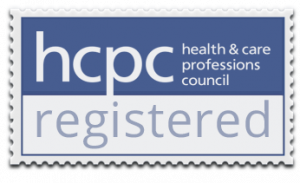
Photo via Pexels
Today we have a guest blog by writer Tamiya Barnes from www.businessbegins.net. She has crafted an excellent set of guidelines for managing change if you’re in a small business.
Whether you’re implementing a new CRM system or expanding into new markets, organizational change is a necessary part of doing business. But as any business owner knows, change is not always easy, and the lack of a cohesive plan that’s tailored to your team will almost certainly lead to disruption.
So, what do you need to do to ensure your organizational changes are successful? Here are some do’s and don’ts that will help guide your steps:
DO create a plan for change.
Define your goals and objectives and develop a timeline for implementation. Keep in mind that changes rarely happen overnight, so give yourself and your employees time to adjust. Here are a few tips for devising a plan everyone can get on board with:
- Define the problem you’re trying to solve.
- Draft a mission statement for the change.
- Outline the steps you’ll take to implement the change.
- Assign roles and responsibilities.
- Set metrics to track progress.
DON’T try to do too much at once.
Overhauling your entire company overnight is bound to be overwhelming for everyone involved. Break down your changes into manageable steps and focus on one thing at a time. Also, consider the abilities and limitations of your staff to establish realistic goals.
DO communicate effectively.
Make sure your employees are aware of the changes happening and why they are happening. Hold open forums for questions and concerns. Employees are more likely to resist change if they feel left in the dark. Here are a few other tips for communicating the change:
- Use language that everyone can understand.
- Be clear and concise.
- Repeat yourself often.
- Encourage feedback.
DON’T force change on employees.
Instead of shoving changes through, make it compelling and exciting to your staff by sharing how the changes will benefit them personally. For example, if you’re implementing a new CRM system, show them how it will make their job easier and help them better serve customers. If you’re initiating new safety protocols, explain how they will make their work environment safer.
DO anticipate roadblocks.
Employee resistance is normal, so plan for the possibility and address it head-on. Be patient and understanding as it’s worth remembering that change can be difficult for people. Along with understanding how to identify roadblocks to change, consider being intentional about removing them before they hinder organizational growth.
DON’T forget to lead effectively.
Leading your team effectively through changes can be a daunting task. There are a few key things to consider for making the process as smooth as possible:
- It’s essential to think outside the box and devise creative solutions to problems.
- You need to articulate your ideas well so that your team understands what you’re trying to achieve.
- You must stay positive and upbeat throughout the process, even when things get tough.
Once the changes have been made, help employees learn how to use the new systems or processes by providing training materials or holding information sessions. And offer ongoing support in case they have questions later on.
DO measure the impact of the changes.
Evaluate how well the changes have been received and what effect they’ve had on your business goals. This will help you determine whether the changes were successful and whether additional changes are needed. A few ways to measure effectiveness include:
- Surveys
- Employee feedback
- Sales data
- Customer satisfaction scores
Conclusion
Organizational change is part of running a business, but there’s no getting around that it’s often difficult. To increase your chances of success, create a change management plan, communicate effectively, administer effective leadership, and follow the other tips above. The more intentional you are about developing and executing a strategy, the more likely your organizational change will unfold!
Finding business success and prioritizing work/life balance can be difficult. Sue Firth can help you achieve your goals in business and life. Schedule a chat today!


